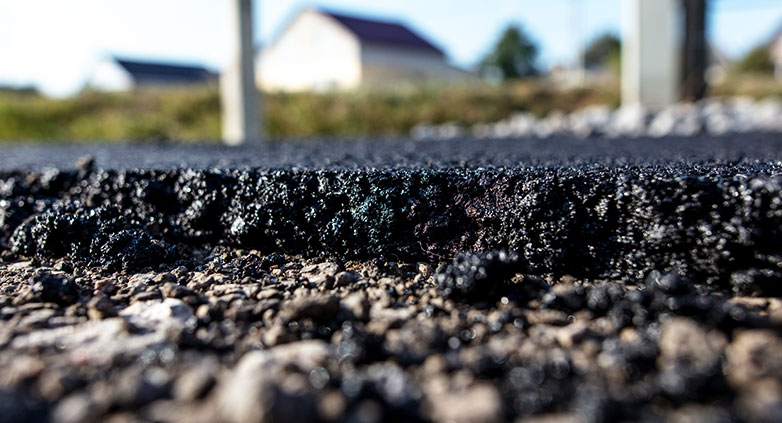How Long Does Asphalt Need to Cure? Timelines & Best Practices
Asphalt, a staple in construction for its durability, undergoes a critical phase called curing after being laid. This process is vital for transforming freshly laid asphalt into a hardened, stable surface. The pressing inquiry is: “What is the required duration for asphalt to undergo the curing process?” In this exploration, we uncover the key factors influencing curing time and essential steps for a successful process.
The duration for asphalt to cure varies based on weather, temperature, and asphalt type. Generally, initial curing takes 24 to 72 hours for regular use, but full strength may develop over several months. Contractors and property owners must understand these factors for optimal performance, ensuring not only durability but also informed decision-making in construction and maintenance planning.
We’ll delve into weather’s impact, the role of asphalt type, and the importance of maintenance during curing. Discover how these factors contribute to the asphalt curing timeline and learn best practices for durability. Join us in unraveling the mysteries of asphalt curing for informed construction and maintenance decisions.
What is the Difference Between Asphalt Curing and Drying
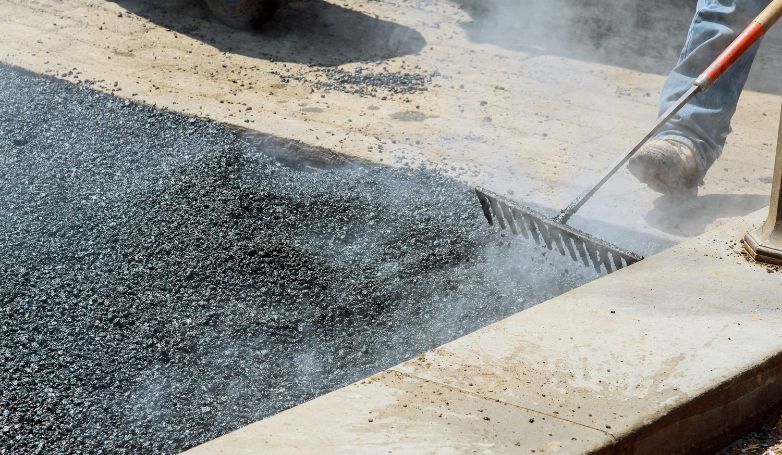
A prevalent misunderstanding often arises regarding the differentiation between asphalt drying and curing. It is crucial to discern that these terms denote distinct processes, each with its unique conceptual framework and requisite timeframes.
Asphalt Curing
Within the realm of asphalt, the curing process involves the molecular fusion of asphalt components and the occurrence of oxidation. During this transformative stage, residual solvents gradually depart the film, initiating a pivotal cross-linking process with atmospheric oxygen. This cross-linking plays a critical role in augmenting the material’s strength, chemical resistance, abrasion resistance, and overall toughness. A comprehensive curing of asphalt typically spans a duration of approximately six to twelve months.
Asphalt Drying
In contrast, asphalt drying pertains to the evaporation of solvents from the surface of the film, resulting in a pavement that is tack-free and resistant to moisture. This distinct process aims to leave the pavement dry to the touch and impervious to residual solvents, offering a surface that is both functional and resilient.
How Long Does Asphalt Take to Dry
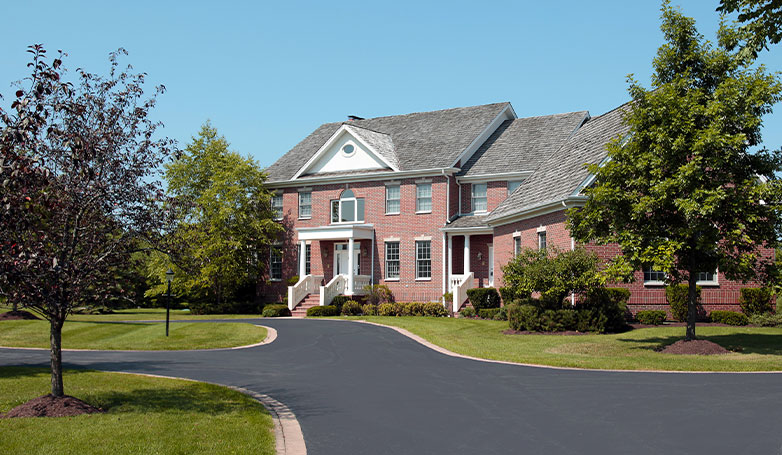
The drying period for an asphalt pavement is a critical factor in determining when it is suitable for vehicle and foot traffic. In the case of newly laid asphalt, this process typically spans from forty-eight to seventy hours. However, it is important to note that this timeframe may vary based on environmental conditions and specific asphalt formulations.
Accelerated Drying for Resurfaced Asphalt
In instances where asphalt has been resurfaced, the drying time is significantly expedited. Resurfaced asphalt often achieves adequate dryness within just a few hours, providing a quicker turnaround for usability.
Temperature as an Indicator of Asphalt Readiness
An alternative method to assess the readiness of asphalt for use is to gauge its temperature against the ambient conditions. Monitoring the temperature of the asphalt surface in comparison to the surrounding environment can serve as a practical indicator of its cooling and drying progress.
Factors Influencing Drying Times
Several factors can influence the drying times of asphalt, including ambient temperature, humidity levels, and the composition of the asphalt mixture. Awareness of these variables is crucial for effectively managing and optimizing the drying process, ensuring the asphalt reaches its desired state of readiness for traffic and other usage..
10 Steps to Take Care of Your Asphalt Surface During the Curing Process
Asphalt looks stunning and compliments just about any home, but only you exercise the right caution during its curing process. As a homeowner, the sight of freshly laid asphalt may excite you to the point that you forget all about being careful with it, but a few practices are necessary.
These include:
1. Avoiding Traffic on Fresh Asphalt
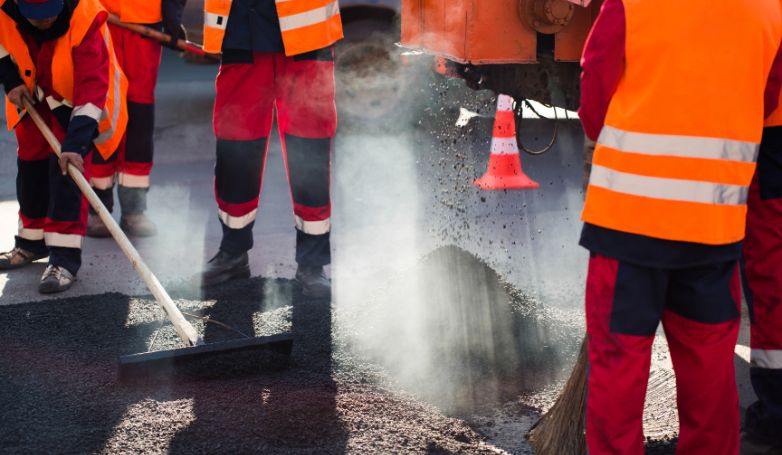
Restricting foot or vehicle traffic on newly laid asphalt is crucial to prevent premature wear and promote an even curing process. This critical phase allows the asphalt’s molecular structure to solidify and attain the desired strength. Traffic can disrupt this process, leading to potential inconsistencies in the surface’s durability and longevity.
2. Implementing Barriers and Signs
Implementing barriers or warning signs is a proactive measure to deter entry, safeguarding the curing surface from unintentional damage. This is especially important during the critical curing phase, ensuring the asphalt remains undisturbed for optimal results. Barriers can also serve as a visible indication of the ongoing construction process, enhancing safety measures for both workers and the public.
3. Controlling Pets and Wildlife
Keeping pets and wildlife away from the curing surface is essential to avoid disruptions and potential damage. As asphalt undergoes the curing process, it emits heat that can attract animals. Their presence may lead to uneven imprints on the surface, compromising the aesthetics and structural integrity of the asphalt. Creating an environment free from external interference fosters optimal curing conditions, contributing to the long-term integrity of the asphalt surface.
4. Limiting Heavy Vehicle Parking

Refraining from parking heavy vehicles on the asphalt is imperative. The weight of such vehicles can not only disrupt the curing process but also cause indentations and structural deformities. This precaution is essential for the integrity of the final asphalt surface, ensuring it meets design specifications and remains resilient under load.
5. Managing Debris Exposure
Minimizing exposure to construction materials or debris is essential for maintaining the integrity of the curing asphalt surface. Foreign particles can embed themselves into the asphalt during the curing process, compromising its structural integrity. Implementing effective debris management measures contributes to a smoother and more durable final asphalt surface.
6. Preventing Water Accumulation
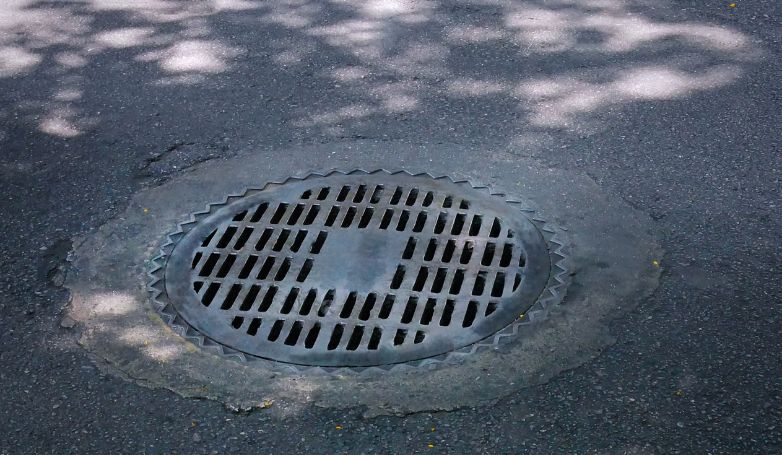
Preventing the accumulation of water on the asphalt is critical. Excess moisture can impede the curing process, potentially leading to structural weaknesses and reduced longevity of the asphalt surface. Proper drainage and grading of the construction site contribute to optimal curing conditions, ensuring the asphalt achieves its intended strength and durability.
7. Shielding Against Chemical Spills
Shielding the surface from oil or chemical spills is vital for preserving the quality of the curing asphalt. Such spills can not only stain the surface but also interfere with the chemical reactions essential for proper curing. This precaution contributes to a resilient and long-lasting asphalt surface, minimizing the risk of deterioration due to chemical exposure.
8. Delaying Sealant Application
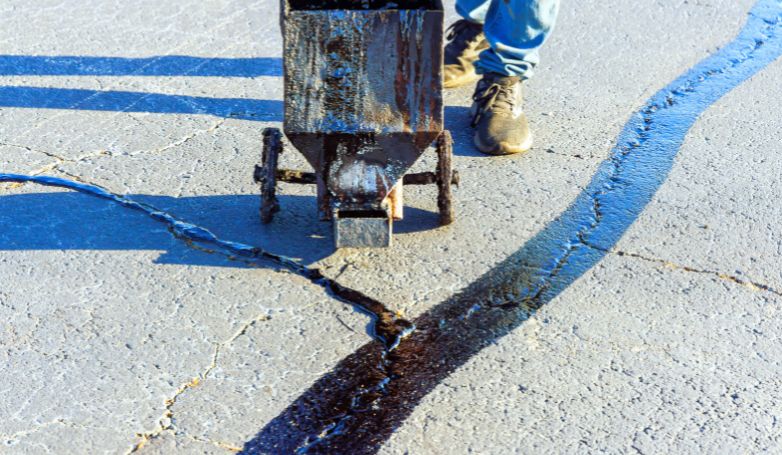
Refraining from applying sealant or coatings until the curing is complete ensures proper adhesion. The curing process allows the asphalt to settle and bond with the underlying layers, providing a stable foundation for sealant application. Applying sealant prematurely may compromise its effectiveness and longevity, affecting the overall performance of the asphalt surface.
9. Following Contractor Recommendations
Monitoring and adhering to specific recommendations from the asphalt contractor are essential. These guidelines consider the unique characteristics of the asphalt mix and the local curing conditions. Following these recommendations optimizes the overall curing process, ensuring the asphalt attains its intended strength and durability.
10. Waiting for the Prescribed Curing Period
Allowing the prescribed curing period before regular use or additional construction activities is fundamental. This period is determined based on the specific asphalt mix and environmental conditions. Waiting ensures the asphalt achieves its intended strength, durability, and overall performance, minimizing the risk of premature wear or damage. Patience during this phase is key to maximizing the lifespan and performance of the asphalt surface.
General Asphalt Maintenance Tips
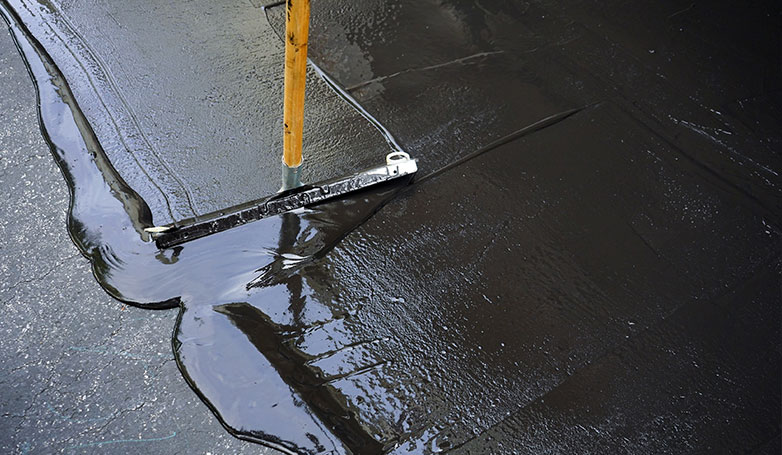
Maintaining your asphalt surface is crucial for extending its lifespan and preserving its appearance. Here are some general asphalt maintenance tips that can help you proactively care for your pavement.
Regular Sealcoating
You must never underestimate the power of regular seal coating. It helps prolong and protect your driveway’s life expectancy. In seal coating, you fill the surface damage while building a protective layer around the asphalt surface, which keeps it safe from UV damage.
UV rays tend to harm the material, just like water and vehicle fluids do. Sealcoating is essential after every three to five years for adding more protection and a fresher look for the surface. When you fail to do this, you leave your surface vulnerable to external factors and elements.
When you properly seal and protect your asphalt, you do not allow it to crack and crumble under elemental pressures. This also maximizes your driveway’s lifetime and reduces the repair costs you would have to bear otherwise in the long-term.
Regular Inspections for Cracking
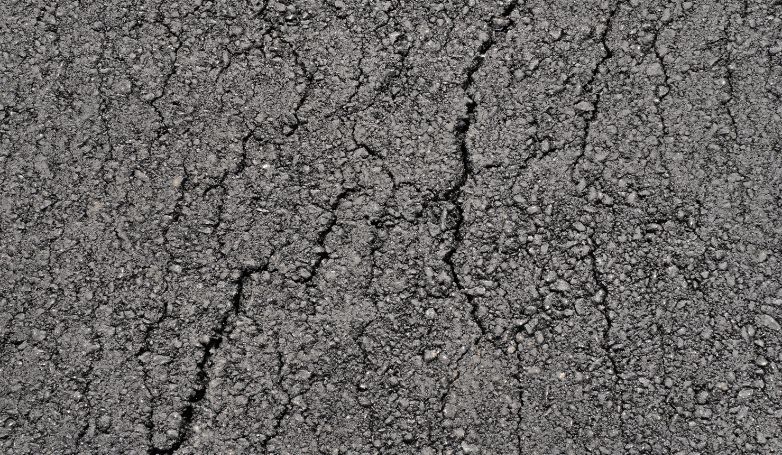
The freeze and thaw cycle is very prevalent in the asphalt material, and in most geographical locations, you can do nothing about it. The movements in the soil and/or subbase can cause the expansion and contraction of the material.
Water also can seep under your driveway and cause more unfavorable movement. Much of this occurs because of the landscape design, over-water, or just too much rain in your area. Since the weather is beyond everyone’s control, cracking is inevitable too. What you can do is inspect your driveway regularly for cracks. Being vigilant in this regard will help you spot cracks and treat them in time
On the contrary, if you allow any negligence here, the cracks will widen to the point that they pose a danger and certainly deteriorate your driveway’s health. Besides, filling cracks is not a very difficult task. You can do it yourself too with some high-quality products from the market.
Regular Cleaning
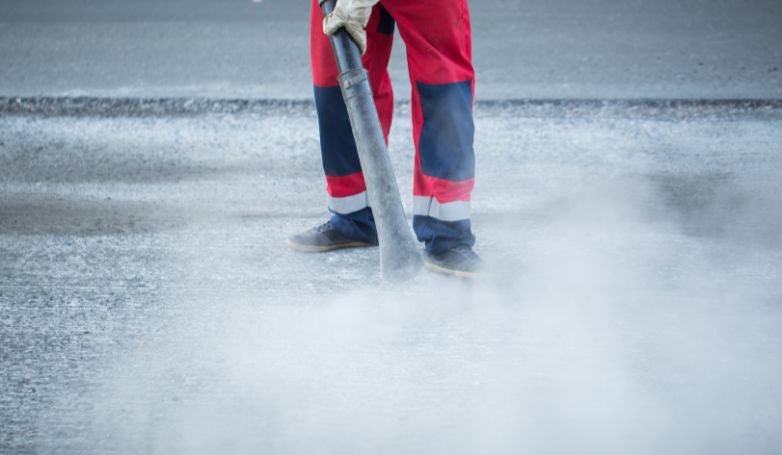
A good cleaning is beneficial through and through, in every regard, and asphalt is no different. A good cleaning every month removes all the harmful elements from your asphalt that could shorten its lifespan and functionality.
Remember, the more active and thorough you are in maintaining your driveway, the more it will last you and save you thousands of dollars in repairs. Part of cleaning is to clear every debris, like garbage and leaves, that could stain the surface and damage it too.
The debris consists of broken stones and rocks, and these could cause cracks, scratches, etc. Apart from this, oil stains from and gas and fuel spills also mar your beautiful asphalt. A thorough cleaning every month would clean those spots too. Besides, it is not only the spots you need to worry about: oil spills can cause a lot more damage.
A degreasing cleaning agent would suffice for the job, and other proactive measures for a monthly cleaning routine would help protect the surface.
Do Not Allow the Growth of Grass & Weeds through Cracks
You may consider these harmless, but weeds and grass can push through asphalt alright. Filling cracks would help you prevent any plant from taking permanent root inside your asphalt. To remedy this problem, you can use spot killers or fill the cracks every year.
Often it happens that specific residences have trees and plants located near the edge of their driveways. With time these can push through, and the tree roots threaten to break out of your asphalt surfaces. As a long-term solution, you must consider removing the plants and tree roots permanently or seal every year.
FAQs about How Long Does Asphalt Need to Cure

Understanding the curing process of asphalt is crucial for ensuring the longevity and durability of newly laid surfaces. Here are answers to frequently asked questions about how long asphalt needs to cure.
Can you drive on fresh asphalt road?
It is advisable to refrain from driving on freshly laid asphalt to allow for the crucial curing process. Driving on uncured asphalt can result in indentations, deformities, and premature wear, compromising the structural integrity of the road. It is recommended to follow the guidance of road authorities and construction professionals regarding when the road is safe for vehicular traffic.
How long for asphalt to cure in cold weather?
The curing time for asphalt is influenced by temperature conditions. In colder weather, the curing process tends to be slower compared to warmer climates. Generally, it can take an extended period for asphalt to cure in cold weather, often exceeding the typical curing times. Additional measures, such as insulating the asphalt or using additives, may be considered to expedite the curing process in colder temperatures.
How to cure asphalt faster?
To accelerate the curing of asphalt, several strategies can be employed. One method is to optimize environmental conditions, such as maintaining higher temperatures, which enhances the curing reaction. The use of additives or accelerators in the asphalt mix can also expedite the curing process. However, it is crucial to consult with asphalt professionals to determine the most suitable approach based on specific project requirements and environmental factors.
Final Thoughts
In conclusion, addressing the question of ‘how long does asphalt need to cure,’ we find that the curing process spans six to twelve months, marked by molecular fusion and oxidation. A properly cured asphalt surface can then endure for over thirty years with diligent maintenance. Considering drying times, new asphalt takes around two days, while resurfaced asphalt is swiftly ready for use within a few hours. Embracing sound practices, regular maintenance, and conscientious usage contribute significantly to the driveway’s durability and sustained quality over time.

